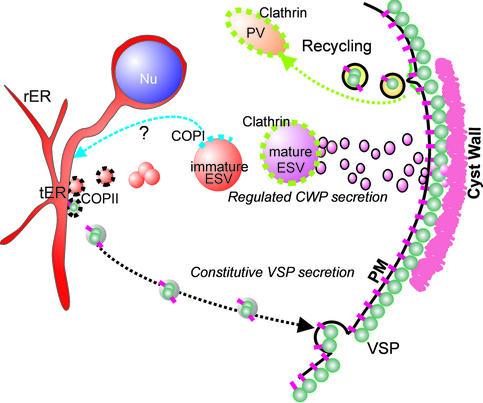Figure 10.
Summary and interpretation of the combined data. The model shows development and maturation of ESVs starting with small tER-derived putative COPII vesicles, which merge to form larger immature ESVs. Separation of CWP-containing vesicles from those containing cargo secreted to the plasma membrane is achieved by selective fusion competency of transport intermediates. Association of small ESVs with COPI suggests maturation by retrograde transport to the ER. According to the data presented here, immature ESVs may therefore represent transient Golgi-equivalents, which develop to clathrin-associated trans-Golgi-like cisterna. Mature ESVs become responsive to an internal signal initiating nuclear division and ESV fragmentation into small carrier vesicles and/or tubules, which fuse with the plasma membrane. After secretion of the extracellular matrix, plasma membrane proteins, such as VSPs, are internalized and presumably transported to the lysosome-like PVs for recycling.

